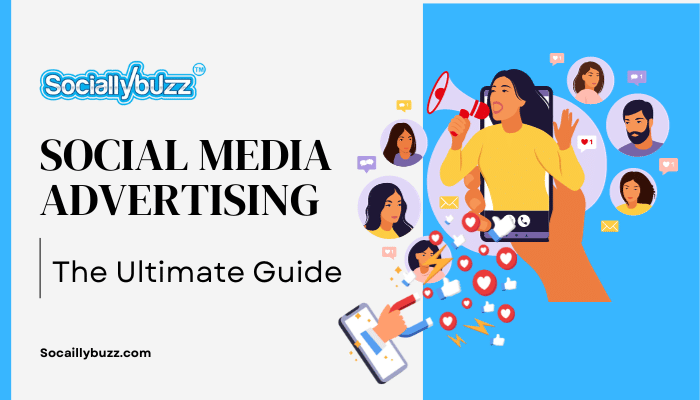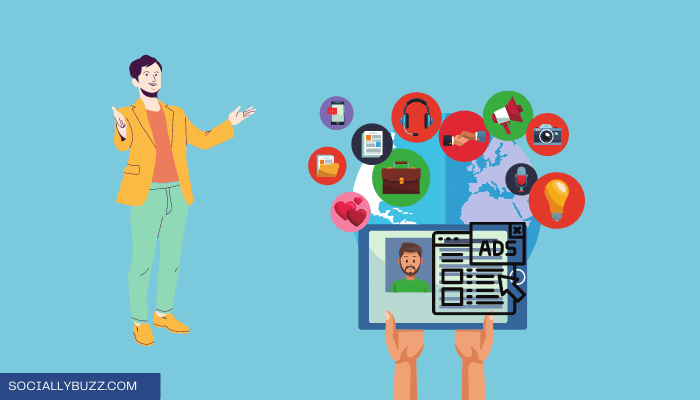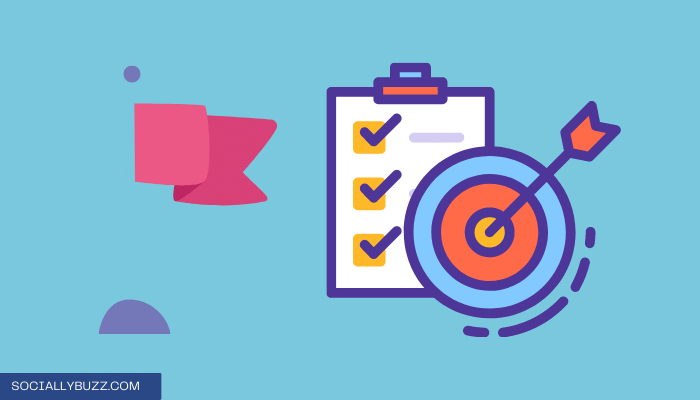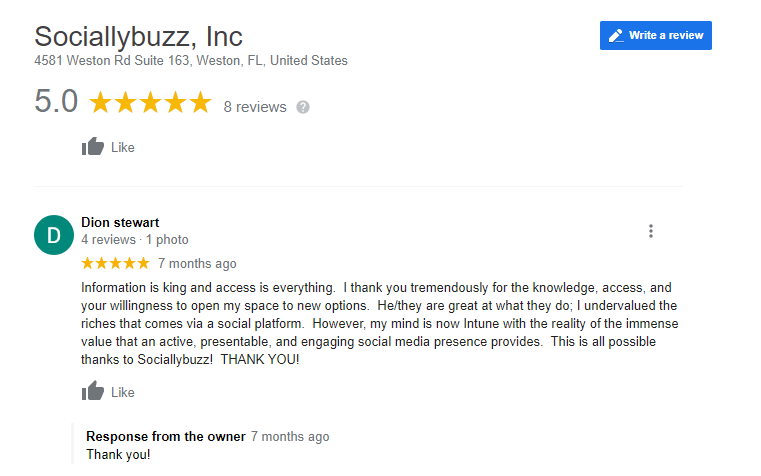
Social media advertising is essential for all business owners, large or small, particularly if you want to stand your brand out from the competition, increase content views, and boost sales.
A recent survey found that the purchasing decisions of 48% of millennials and 75% of Gen Zers are influenced by social media ads. Social media ad spending in the US reached $40.3 billion in 2020.
Since organic reach is becoming increasingly complex, social media advertising is your sure bet if you want to reach new audiences and generate more leads quickly.
This social media advertising guide will help you ensure you’re using the right platforms and receiving the best value for your ad spending.
Sociallybuzz is a leading social media marketing, management, and digital advertising agency for small and medium-sized businesses. With over 17 years of experience as one of the first social media marketing agencies in the world, we know how to create and execute marketing campaigns that will help you grow your business. Our social media agency has created successful targeted social media campaigns that acquired our customers more leads, sales, and revenue.

Social media advertising—a type of digital marketing— uses paid ads to promote your business and reach your target audience.
Your “paid reach” is the total number of people in your target audience who see your social media ads. On the other hand, your “organic reach” is the number of people who read information distributed by the algorithm without any cost.
You have a far better chance of reaching a larger target audience when you pay to promote your content. With social media ads, you can quickly and effectively communicate your value proposition to potential customers and increase sales.
In addition, social media advertisements are more affordable than traditional advertising channels and provide a high return on investment.
The following are some of the benefits of advertising your business using social media advertising:
Social media advertising helps you increase your brand awareness. It also lets you target new customers who fit your demographic requirements and your present followers on social media by using ads that cast a wide net.
This implies that your brand can reach new audiences and penetrate new markets in ways that traditional advertising might find difficult to match.
Social media advertising has become a preferred option for many businesses because it is cost-effective.
The cost of promoting on social media is significantly less than that of traditional advertising approaches. You can decide on a budget in advance, and most social media networks offer customizable alternatives to assist you in getting the most out of your investment.
The main focus of social media platforms is social interaction. You’re not only producing more content when you run advertisements. You’re giving your viewers the chance to engage in meaningful conversation.
Social media ads motivate your audience to take action and establish a connection with your brand through likes, comments, shares, and clicks.
Since users disclose much information about themselves on social media platforms, social media ads allow for precise targeting.
You can easily reach your desired target group: prospects interested in your brand’s products or services, consumers who have previously purchased from you, and potential leads who have visited your website.
Layered targeting enables you to target your audience precisely. You may target your ads to the right people at the right time based on various factors, including age, geography, hobbies, and online behavior.
Social media enables you to grow your business by offering insights into the performance of your ads.
The ability to monitor and assess your ad’s performance in real-time is one of the most notable features of social media advertising.
It allows you to take note of the number of people who noticed your ad, clicked on it, and eventually completed a transaction.
In addition to this knowledge, you may also evaluate the effectiveness of various ad aspects, such as a call to action, design, and content, saving you time and money by giving you the information you need to adjust your campaigns for the best outcomes.
Social advertising is based on audience targeting. Four elements are crucial to social media advertising: goals and objectives, targeting, ad styles, and bidding and budgeting.
These elements are the foundation for any successful campaign, enabling you to manage your budget efficiently, connect with the right audience, and create an engaging social media message.
Social media advertising requires understanding and harnessing these components to the fullest.

Establishing the right goals is essential for a successful social media advertising campaign. The first step in launching a campaign is getting your goals and objectives. The three most common goals are awareness/reach, leads and engagement, and sales and conversion.
Assuming your goal is to increase brand awareness, you can target to reach one million people with your ad in a single month.
Alternatively, you can target 1,000 online sales in two weeks to boost sales. Setting campaign goals and objectives will assist you in targeting and aligning your budget and ad content with your desired outcomes.

Finding the appropriate audience in a congested space for your product or service is the primary goal of audience targeting.
You can target specific users on social media networks according to their age, geography, hobbies, and behavior. You can also create retargeting and lookalike audiences.
For example, People who love an active lifestyle and are health-conscious are your target audience if you own a fitness brand and sell high-protein snacks.
You can use audience targeting to show your advertising only to those explicitly interested in health, fitness, nutrition, and other related themes rather than attempting to reach everyone. By doing this, you can guarantee that the people most likely to buy your goods get your message.
Ad styles are a blend of text and visual elements used to capture the interest of your target audience and influence them to take a desired action.
Your ad style selection will be based on your brand’s objectives and messaging. For example, a carousel ad is the best option for conveying a complex story.
A straightforward graphic ad can be effective if you’re seeking rapid engagement. Whether your goal is to inform, inspire, or entertain your audience, the secret is to create ads with visually appealing elements that connect with them.

The amount you pay for your ads and the efficiency with which they reach your target audience are determined by bidding and budgeting. For instance, if you’re trying to sell a product, you might bid $2 for each ad click. Your ad will run until you spend the $20 daily budget you have set aside.
It’s essential to balance your bid and budget to ensure that your advertising receives adequate awareness and stays within budget.
You should practice prudent bidding and budgeting to get the most out of your social media advertising efforts.
Continue reading to discover a breakdown of the best social media advertising platforms to help you choose which would work best for your marketing strategy.
Facebook is the most widely used social media platform worldwide and has the most evenly distributed age demographic.
With a user base of 2.27 billion people, Facebook has long been the preferred platform for most marketers because of its advertising Manager, which offers possibilities for creating and targeting advertising.
And the intriguing aspect? Utilizing your customer database, you may target prospects who have only visited your website without interacting with your Facebook page and upsell and cross-sell campaigns on the platform.
Pros:
Cons:
Instagram offers similar options to Facebook. It is a platform where you can show off your brand personality. The 18–34 age group is its largest demographic on Instagram. It works well for distributing brief videos and eye-catching product images.
Also, you can connect with a wide range of your target audience through stories, live videos, and hashtags. If your brand is recognized for producing visually appealing products or services, Instagram should be your first choice.
Compelling visual content and well-defined brand messaging are essential for Instagram advertising.
Pros:
Cons:
YouTube has the highest advertising audience compared with other platforms. It’s ideal for creating demos and how-to videos and exhibiting your brand culture.
You can allow viewers to view your marketing videos and ads straight from your channel on the platform, or you may embed them on your website.
You can increase your brand’s exposure, engagement, and conversions with the right strategy and effective ads.
Pros:
Cons:
This social network is designed with professionals in mind. It’s ideal for communicating business updates, attracting top talent, and establishing connections with colleagues in the field.
This platform is specifically designed to produce high-quality leads for business-to-business marketers—a vital tool for companies looking to reach professionals and decision-makers.
Pros:
Cons:
With 237.8 million active, X is a well-known social media platform for its microblogging capabilities and real-time updates.
It is fast-paced, trending, and ideal for businesses that frequently release fresh content and updates on nearly everything that goes on with them. X is the platform to use if you want to take advantage of trending subjects for advertising and participate in real-time conversations.
Pros:
Cons:
With over 689 million monthly users, TikTok is a popular website for short, funny videos. You can showcase your brand’s entertaining side and attract Gen Z customers by showing content such as quick product unboxings and viral dancing tutorials.
TikTok has transitioned from an emerging platform to a well-established one with the potential to create novel and captivating advertising.
Pros:
Cons:
Social media is a large advertising market. Here are some important social media advertising stats.
Ad costs vary for different types of social media platforms. The vital thing to do is to draft a budget that suits your financial needs. Here’s a breakdown of platform by platform average cost.
Facebook advertising costs vary significantly depending on your campaign objective, audience targeting, ad placement, and level of competition within your selected audience segment.
For instance, a campaign with an “impressions” goal often costs $1.85 per click, whereas a “conversions” target typically costs $0.87. Facebook ads take these main structures:
Instagram advertising has varying costs, usually from $0.20 to $2.00 per click. However, some variables affect these costs, such as the pricing option you select.
You can utilize Instagram ads with the cost-per-click (CPC) model if you would rather only pay when viewers interact with your ad. In this scenario, the cost per click might increase to $3.00.
Alternatively, you can use the CPM approach, which would cost you about $7.00 for each thousand impressions your ad gets. Your budget plan and marketing objectives should align with your chosen pricing model.
Cost per view (CPV) and cost per click (CPC) are the two main pricing models for YouTube advertising. YouTube’s typical cost-per-click (CPC) can vary greatly, from $0.10 to $0.30.
You only get charged with CPV when a viewer sees a sizable chunk of your video advertisement.
When a viewer views your video for at least 30 seconds (or the full 30 seconds if it’s shorter) or engages with your advertising by clicking on a call-to-action overlay, YouTube counts that as a view. The cost per view (CPV) might vary from $0.01-0.15.
Cost-per-click (CPC) is the leading pricing model for LinkedIn advertising. The typical CPC on LinkedIn may vary from $2 to $7 or higher, contingent upon variables such as ad quality, competition, and audience targeting.
For example, if you have a $3 CPC bid on a campaign to advertise fitness services, you will be paid $3 each time an ad is clicked. Audience targeting is one of the significant aspects that affects LinkedIn advertising costs.
Because specific audiences are more challenging to get by, your cost per click (CPC) may be higher if you’re trying to reach a niche market.
Understanding these cost dynamics is vital to developing a budget-friendly LinkedIn advertising campaign channeled to your particular goals.
Depending on your budget, x allows you to spend little or too much on ads. Like most social media platforms, Twitter uses an auction mechanism to run its ads.
You choose the daily budget for your campaign and the bid you are prepared to spend for a particular activity. Generally speaking, your ad’s chances of reaching your target audience increase with your bid amount. However, this isn’t the primal factor.
The following are the different kinds of social media ads:
Well-defined objectives will guide your ad campaign strategy. Start by outlining the specific goals of your campaign. Are you trying to ramp up sales, improve website traffic, create leads, or boost brand awareness?
Chances are you’re already using the organic social media strategy. If so, utilize results from your organic strategy as a guide for your paid strategy.
You can use engagement metrics, top-performing posts, low-performing posts, and audience insights from your organic data to understand the audience segments to target and which offers to push.
Encourage your customers to create brand- or product-related content, then use it in your ads. User-generated content gives your campaigns more credibility and legitimacy.
To increase the appeal of their offerings to prospective visitors, Airbnb, for example, regularly includes user-generated vacation photographs in their ads.
Focus on users who have engaged with your app or website in the past but have yet to convert. Make specialized ad sequences based on their actions.
For example, Amazon reminds customers to finish their purchases by showing them ads for products they have already browsed.
Use interactive ad forms, like polls, quizzes, or playable advertising, to draw in your audience. Interactive content is attention-grabbing and creates an unforgettable experience.
For instance, with the help of a widespread marketing campaign, Spotify lets users make custom playlists according to their musical tastes.

Highlight favorable comments, ratings, or endorsements left by satisfied customers. Use ratings and reviews from past visitors to bolster authenticity and confidence in your ad campaigns.
Learn more about the effectiveness of social media advertising.
You can manage your social media advertising strategies alone or hire a professional. Each option has its benefits and downsides.
Running your ads on your own is the most affordable option for social media advertising. All required is setting up your campaign and selecting an advertising platform. This is suitable for business owners operating on a tight budget and who don’t have the means to hire an advertising agency.
Pros:
Running ads on your own saves you costs. Instead of paying extra for an ad management agency, you can devote your budget to testing ads and selecting the best one for your business.
Additionally, managing your campaigns can help you cultivate an eye for advertising. The insights you learn from them will help you improve future campaigns.
Cons:
Learning advertising may take time away from your busy schedule if you are a business owner. It takes time and dedication to become an expert in advertising; therefore, the more time you devote to it, the less time you have for other aspects of your company.
Also, your ads may not be successful even after you’ve put much work into it. Investing so much time in advertising could be risky when you’re just starting out and don’t know if you’ll receive the desired results.
This is usually expensive, but it’s also the easiest to implement and will likely provide the highest returns.
To get the desired results, hiring an agency is the best option rather than depending on your skills. This option might work best for you if you want immediate sales and have the budget.
Pros:
The fact that advertising professionals are knowledgeable in their field is their greatest benefit. This increases the likelihood of achieving the intended outcomes significantly.
Employing a managed service also entails doing no work yourself, freeing up time and energy for other aspects of your company that require greater attention.
Cons:
The main drawback of using an advertising agency is that, if you choose poorly, you may waste a lot of money.
Make sure you do your homework before hiring any advertising agency. Regretfully, some agencies pose as specialists to lure clients into parting with their money.
Social media advertising is one of the best ways to reach your target audience faster and convert them into customers. Social advertising offers a constant and scalable lead generation that is unmatched by other advertising options.
With more and more business owners pitching their tent on social media, it’s imperative that you become well-versed in social media advertising. You can strengthen your social media advertising strategy and be far ahead by using the tips and insights provided in this guide.
Sociallybuzz is a leading social media marketing, management, and digital advertising agency for small and medium-sized businesses. With over 17 years of experience as one of the first social media marketing agencies in the world, we know how to create and execute marketing campaigns that will help you grow your business. Our social media agency has created successful targeted social media campaigns that acquired our customers more leads, sales, and revenue.
Subscribe now to receive relevant social media information, tips, tricks and service updates.